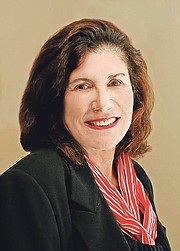The date March 31 passed two weeks ago with hardly anyone noticing, or maybe I missed the celebration and hoopla you might have expected on the 50th anniversary of a product that changed the culture. Starbuck’s turned 50 on that day and we are all a little poorer, a pound or two heavier and definitely more satiated for it.
I have no idea why I started thinking about the meaning of Starbuck’s last week. I certainly had no clue about the half century anniversary. Maybe it was because I entered a room where one of the first in-person meetings I had attended in 14 months was being held and despite the dignitaries present, someone showed up with that familiar green and white cup containing a swirling world of sweet instant energy and smug satisfaction. Before Starbuck’s, would anyone have dreamt of entering a business meeting carrying a cup, planning to slurp instant joe or hot chocolate while major decisions were being made? Early on in the unfolding of Starbuck’s becoming part of a daily routine, restaurants that served regular coffee took offence and posted signs asking customers to leave their grande mocha lattes outside before entering.
Starbuck’s is more than a coffee or even a variety of coffees, teas, blended drinks, with pastries, wraps and cookies to pad the already insane number of calories offered for the brave at heart or those who silently vow with every sweet sip and bite to work it off later. Starbuck’s is a phenomenon that took a simple concept, the idea of sitting down to a cup of coffee in a living room-like setting and reading the morning paper or meeting a friend and created a boon to the economy across the globe. By 2019, there were 31,256 locations in 78 countries.
The Wall Street Journal once calculated that Starbuck’s opens a new store somewhere in the world every four hours. Not so surprising when you consider that we humans down 1.4 billion cups of coffee a day worldwide with 45 percent of that sipped and savoured daily.
It’s a far cry from the original nickel cup of java that made the golden doors open to grab a cup and add to your tray at the once famous Horn & Hardart’s cafeterias in the northeastern United States. When H&H doubled its price for a cup of coffee it made headlines in all the major papers, the last of the bargain brew was giving way to the reality that a good cup of the dark brown liquid inspiration was a die just about everywhere else. In fact, it had been selling for that higher price since the Depression when the song, ‘Brother, can you spare a dime?’ symbolized all that was troubling and painful about the times. Former professionals and once successful businesspeople reduced to begging for as little as a time to fill themselves up on a cup of coffee that they could get in the corner diner adding all the sugar and cream they needed to sustain themselves till the next dime came along.
It’s a far cry, indeed. The battle over the most expensive cup of coffee at a Starbuck’s continues but barista Andrew Chifari claims to have created a Sexagintuple Vanilla Bean Mocha Frappuccino with 60 shots of espresso bringing that bill to $54.75. Just last December, while the rest of us were thinking about Christmas presents for others, one William Lewis of Florida broke his own record and could be the title holder, ordering a grande latte with 99 extra shots of espresso accompanying the 17 pumps of vanilla syrup and other goodies, a monster that came in at $83.75 ca-chings on the register.
If I do stop at a Starbuck’s in Nassau one of these days, I won’t grumble at the $2.63 price tag for a tall black coffee. And if you are going by a Dunkin’, I can run on that, too. If Starbuck’s changed the culture and became the unlikely darling of the stock exchange with its share price knocking on $116, Dunkin’s coffee is a classic. Just pour it fresh and warm and straight out of the pot with no edible décor. Either will do and both are fascinating stories if understanding success is your cup of tea.
Potter’s Cay, a disaster waiting to happen
Is this really the famous waters of The Bahamas?
Imagine if this were the photo the Ministry of Tourism or the Nassau Paradise Island Promotion Board used to brand The Bahamas and attract visitors from around the world to Nassau.
What you are looking at is the eastern side of life at Potter’s Cay before the fire that tragically destroyed livelihoods and miraculously did not take lives. I hope in the coming weeks to share more of the fascinating history of Potter’s Cay, including a surprising fact about the area.
I took the top view taken from the beautifully maintained boardwalk east of Potters Cay, the other from the bridge.







Comments
Use the comment form below to begin a discussion about this content.
Sign in to comment
OpenID